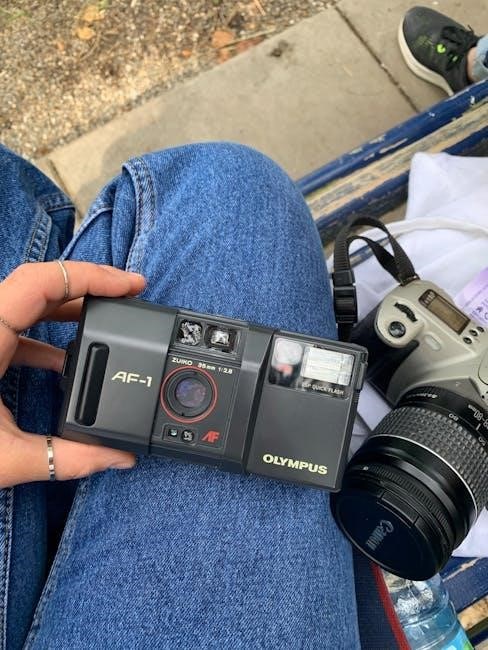SEW-Eurodrive Operating Instructions: An Overview
This section provides a general introduction to SEW-Eurodrive operating instructions. These instructions are essential for ensuring the fault-free and safe operation of SEW-Eurodrive products. Furthermore‚ they cover a wide range of topics from installation to troubleshooting‚ and warranty information.
SEW-Eurodrive stands as a global leader in drive technology and automation solutions. With a rich history spanning 75 years‚ they’ve pioneered innovations like the world’s first gearmotor. Their core gearmotors are known for robust design‚ reliability‚ and versatility. SEW-Eurodrive’s operating instructions are designed to guide users through the proper installation‚ operation‚ and maintenance of their products. These manuals ensure optimal performance and longevity of the equipment. By adhering to these instructions‚ users can maximize efficiency while minimizing potential risks. These documents also provide necessary information regarding safety precautions‚ technical specifications‚ and troubleshooting procedures‚ ensuring a comprehensive understanding of the product’s functionality.

Safety Guidelines and Precautions
This section highlights crucial safety information for working with SEW-Eurodrive products. It’s vital to adhere to these guidelines to prevent injury and equipment damage‚ ensuring a safe working environment and long product lifespan.
General Safety Information
Prior to installation‚ operation‚ or maintenance of SEW-Eurodrive equipment‚ carefully review all safety guidelines and warnings. This section emphasizes the importance of understanding potential hazards associated with electrical and mechanical components. Ensure that only qualified personnel handle installation and repair‚ adhering to all relevant safety regulations. Always disconnect power before performing any maintenance. Use appropriate personal protective equipment (PPE). Never bypass safety devices. Report any unsafe conditions immediately. Familiarize yourself with emergency shutdown procedures. Regularly inspect equipment for wear and tear. Follow lock-out/tag-out procedures during maintenance. Proper grounding is essential to prevent electrical shock. Stay informed about the specific safety requirements for each SEW-Eurodrive product.
Safety Notes for Explosion-Proof Gear Units
These safety notes are specifically for SEW-Eurodrive explosion-proof gear units (R..7‚ F..7‚ K..7‚ S..7‚ SPIROPLAN W). Installation‚ operation‚ and maintenance must comply with explosion protection standards. Verify the gear unit’s suitability for the intended hazardous area. Use only approved accessories and spare parts. Avoid modifications that could compromise explosion protection. Ensure proper grounding to prevent static discharge. Regularly inspect for damage and leaks. Do not operate if damage is present. Maintain proper ventilation in the surrounding area. Follow specific instructions for cleaning and lubrication. Prevent the accumulation of dust or other flammable materials. Be aware of temperature limitations. Only qualified personnel trained in explosion protection should work on these units. Adhere to all local and national regulations.
Installation and Startup Procedures
This section details the proper electrical installation requirements for SEW-Eurodrive units. It also covers the recommended startup procedures and crucial considerations to ensure safe and efficient operation from the outset.
Electrical Installation Requirements
Electrical installation must be performed by qualified specialists‚ adhering to relevant accident prevention regulations. Refer to SEW-Eurodrive documentation before commencing installation. Proper wiring and grounding are critical for safety and optimal performance. Options and accessories from SEW-Eurodrive should be used exclusively with SEW-Eurodrive products. Verify correct voltage and current ratings before connecting the unit. Employ protective schemes for switching elements to minimize interference. Ensure proper isolation of power during installation. Consult the appropriate SEW-Eurodrive manuals for specific wiring diagrams and instructions. Failure to adhere to these guidelines may result in damage‚ malfunction‚ or personal injury‚ and may void the warranty.
Startup Procedures and Considerations
Before starting up any SEW-Eurodrive unit‚ carefully read and understand the relevant operating instructions. Verify that all electrical connections are secure and that the motor and brake are properly installed. Check for any obstructions that may impede the unit’s movement. Gradually increase the load during the initial startup phase. Monitor the unit’s performance for unusual noises or vibrations. If any issues arise‚ immediately stop the unit and consult the troubleshooting section of the manual. Ensure that all safety devices are functioning correctly before resuming operation. Pay close attention to the motor’s temperature and current draw during startup. Proper startup procedures are essential for maximizing the lifespan and reliability of your SEW-Eurodrive equipment.
Functional Safety Technology
SEW-Eurodrive’s functional safety technology ensures safe operation. The product must not perform safety functions without a higher-level system‚ unless specifically allowed. Always adhere to safety guidelines and documentation for correct operation.
Safety Functions and Higher-Level Systems
SEW-Eurodrive emphasizes the importance of integrating its products with higher-level safety systems to ensure comprehensive functional safety. Unless explicitly stated in the documentation‚ SEW-Eurodrive products should not perform safety functions independently. A higher-level safety system is required to monitor and control the safety-related aspects of the drive system.
These systems are designed to prevent hazardous situations and ensure the safe operation of machinery. Proper integration with safety PLCs‚ safety relays‚ or other safety controllers is crucial; Refer to the relevant SEW-Eurodrive manuals for specific instructions on connecting and configuring safety functions within the higher-level system. Correct implementation is vital for maintaining safety integrity and compliance with safety standards.

Available Documentation and Resources
SEW-Eurodrive provides a comprehensive suite of documentation and resources to support its products. This includes printed manuals‚ online resources‚ CAD data‚ product data‚ and software downloads to assist users.
Printed Manuals and Online Resources
SEW-Eurodrive offers a range of printed manuals for detailed product information. These manuals contain essential information for installation‚ operation‚ and maintenance. Furthermore‚ users can order printed manuals directly from SEW-Eurodrive for convenient access; The online resources offer a wealth of information‚ including downloadable manuals‚ application guides‚ and FAQs. The SEW-Eurodrive website provides a central hub for accessing this documentation. It ensures users have the necessary information for optimal product performance. Contact SEW-Eurodrive for further assistance or clarification. This documentation is crucial for understanding the safety aspects and operational procedures.
CAD Data‚ Product Data‚ and Software Downloads
SEW-Eurodrive provides a comprehensive suite of digital resources for its products. Users can access CAD data for integrating SEW-Eurodrive components into designs. Furthermore‚ product data sheets offer detailed specifications and performance metrics. Software downloads‚ including configuration tools and firmware updates‚ are also available. These resources streamline the design‚ implementation‚ and maintenance processes. Users can find CAD models and technical information online. This facilitates seamless integration and accurate system design. Order-specific packages are also accessible online. Contact SEW-Eurodrive for any assistance needed in locating specific digital resources. Utilizing these downloads ensures optimal product integration and performance.

Troubleshooting and Maintenance
This section focuses on common issues encountered with SEW-Eurodrive products and their corresponding solutions. Proper maintenance procedures are crucial for extending the lifespan and ensuring the reliable performance of your SEW-Eurodrive equipment.
Common Issues and Solutions
This section details the most frequent problems encountered while operating SEW-Eurodrive systems. It provides troubleshooting steps for issues such as motor failures‚ communication errors‚ and unexpected shutdowns. Furthermore‚ it explains how to diagnose the root cause of problems using error codes and diagnostic tools. Detailed solutions‚ including adjustments‚ repairs‚ and component replacements‚ are outlined to resolve these issues effectively. The section also covers preventative measures to minimize the recurrence of common problems. By following these guidelines‚ users can quickly identify and address malfunctions‚ minimizing downtime and maximizing the operational efficiency of SEW-Eurodrive equipment.
Warranty Information

This section outlines the terms and conditions of the SEW-Eurodrive limited warranty. It describes the coverage period‚ what is covered‚ and the procedures for making a warranty claim. It also describes what voids the warranty.
Rights to Claim Under Limited Warranty
To ensure fulfillment of rights under the limited warranty‚ it is essential to carefully read and understand the information provided in the documentation. SEW-Eurodrive emphasizes the importance of reviewing the warranty terms before commencing any work with the unit. Failure to adhere to the instructions and guidelines may affect warranty coverage. Please note that warranty claims may be voided without prior consultation with SEW-Eurodrive. Using an oil heater may only be permitted after contacting them. Additionally‚ using options and accessories from SEW-Eurodrive may only be used in combination with products from SEW-Eurodrive.








































